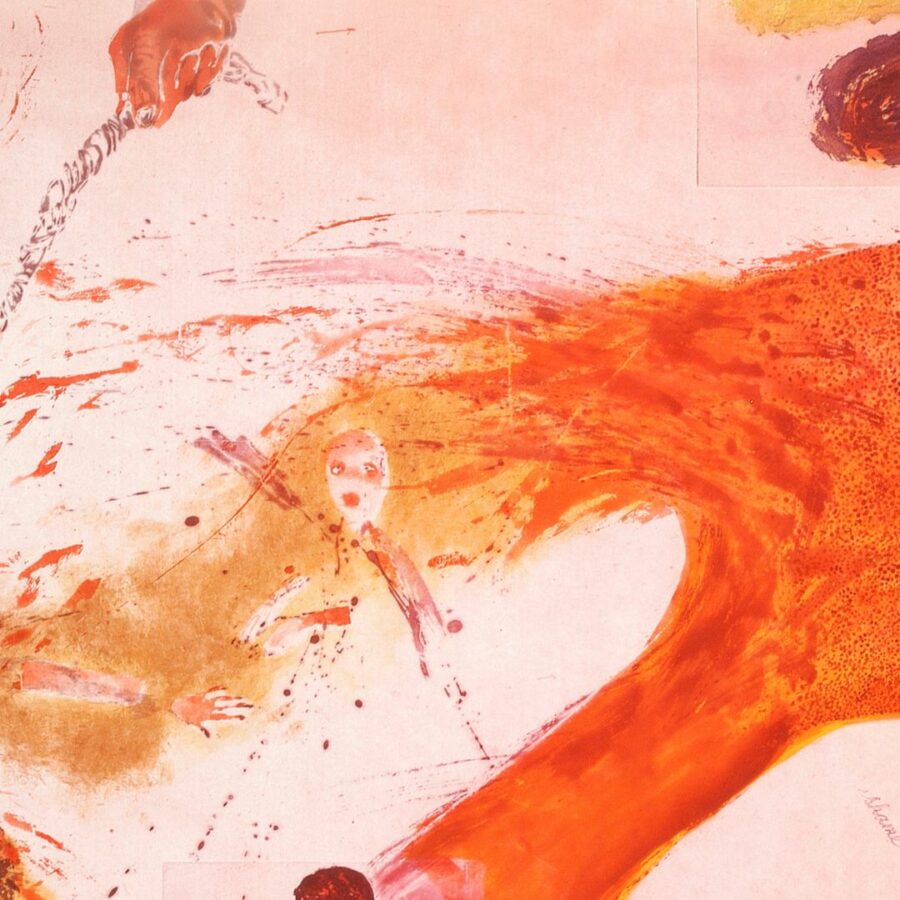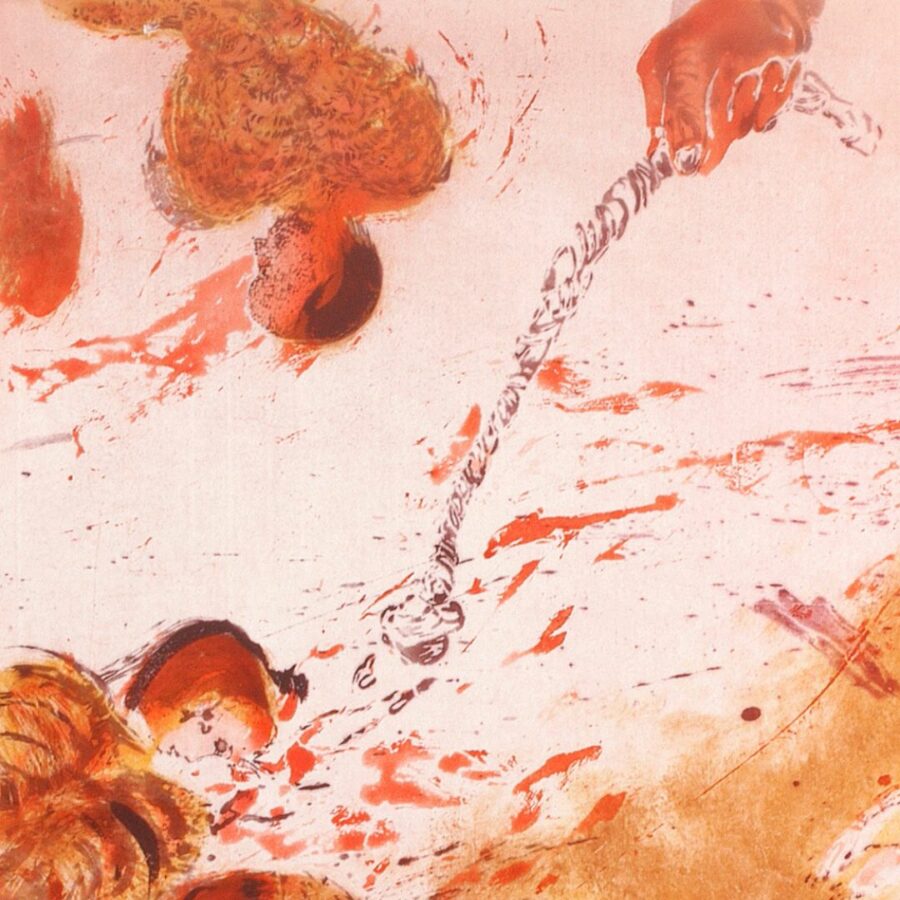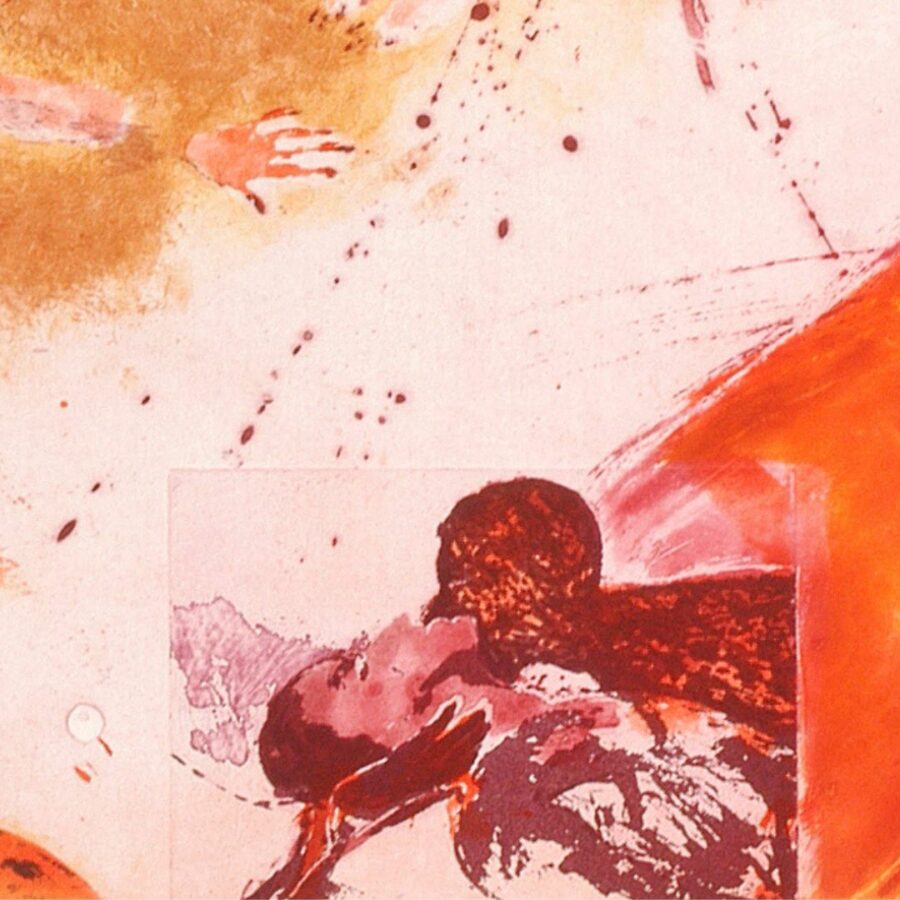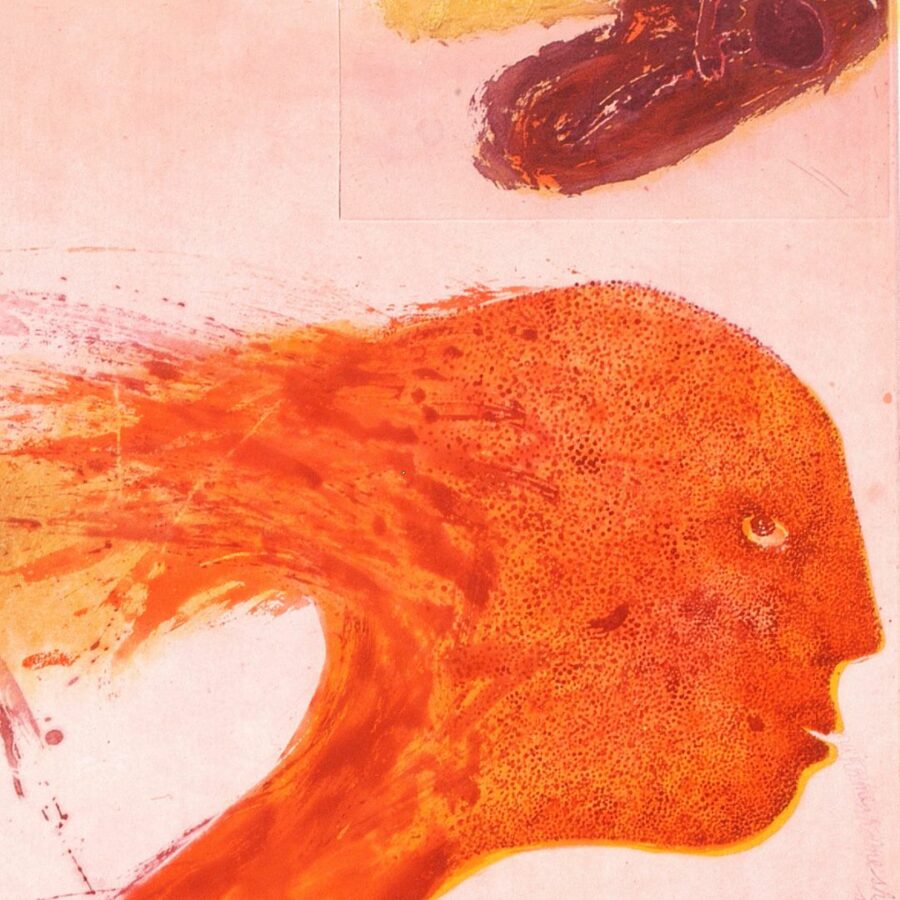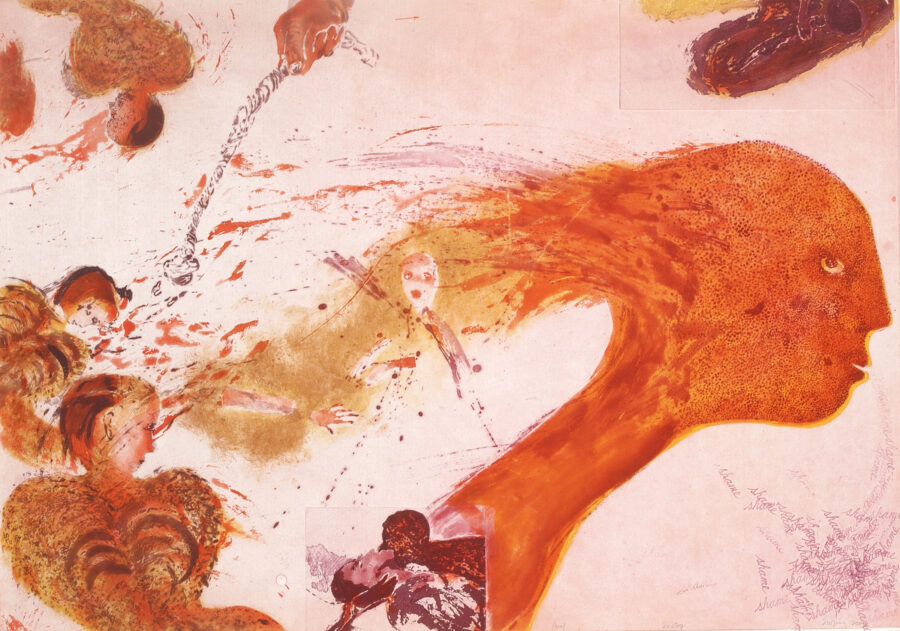In the early 2000s, Penny Siopis began uncovering the various connotations that live within the feeling of shame. The initial works in this series were paintings featuring the emotive warm tones and eerie figures that we associate with the artist; in 2003, Siopis was invited to the David Krut Workshop, which was then a much smaller studio, located on Jan Smuts Avenue. During this time, the intricate work ‘Siestog’ was produced.
Through her work Siopis has found that the feeling of shame transcends individual experiences, it has become a collective narrative ingrained in our societal fabric. In ‘Siestog’, Siopis reflects on how the titular colloquial phrase signifies the unique relationship South Africans have with “Shame”.
I’m sure many South Africans have come across a confused foreigner who has been baffled at when and how we use the word, “Shame”. South Africans are known to use this word in situations that are good, bad or anything in between, but so often we use this word to convey sympathy or endearment. With this in mind, ‘Siestog’ and the ‘Shame‘ series that followed, expose the intersection between a sympathetic society and the nation’s deeply rooted history of shame, marked by the legacy of apartheid, and its contemporary struggles.
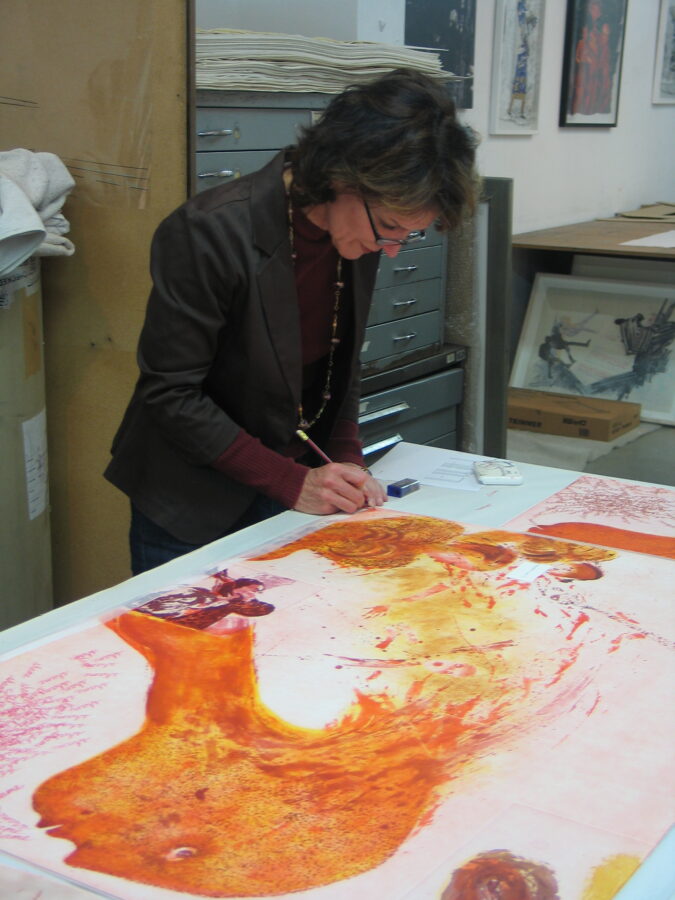
“… there is also another dimension of shame that interests me; in its deepest despair shame may offer us the potential for empathy. To feel shame is perhaps a condition for recognizing the shame of others… This ‘other side’ of shame is emblematised for me in the particular way the word shame is used colloquially in South Africa as an expression of sympathy for, and identification with, someone else’s public pain. If you should fall in the street people, for instance, might exclaim shame or cry out sorry, even though they are not to blame for your fall. The Afrikaans version of this crying out at hurt is siestog, tellingly translated as a mixture of disgust (sies) and pity (tog).” – Penny Siopis
‘Siestog’ is primarily an intaglio print on paper that utilises monotype technique and various other visual methods. The image was constructed from an initial monotype that Siopis had done. This monotype guided the collaboration between the artist and the printers in terms of how they were going to resolve the image further through the elements of printmaking.
The monotype layer is laid down first; a yellow-brownish hue that makes up the organic forms that will become recognisable as the figures. This layer was painted directly onto a Perspex sheet, what had been applied would then be altered as brushes and rags were applied to push the tonality of the area back, remove harsh edges and create a textural atmosphere.
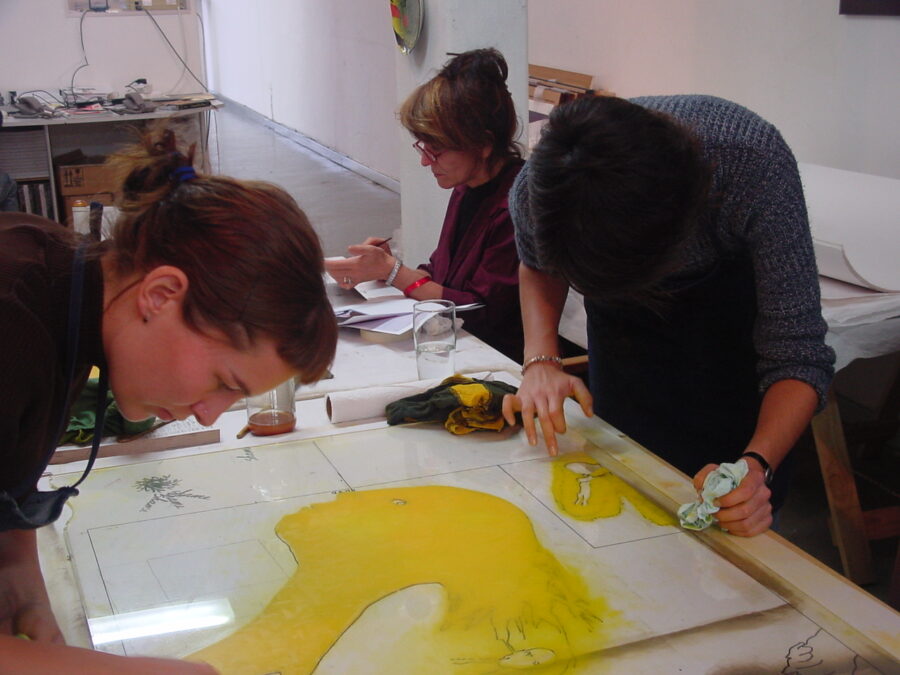
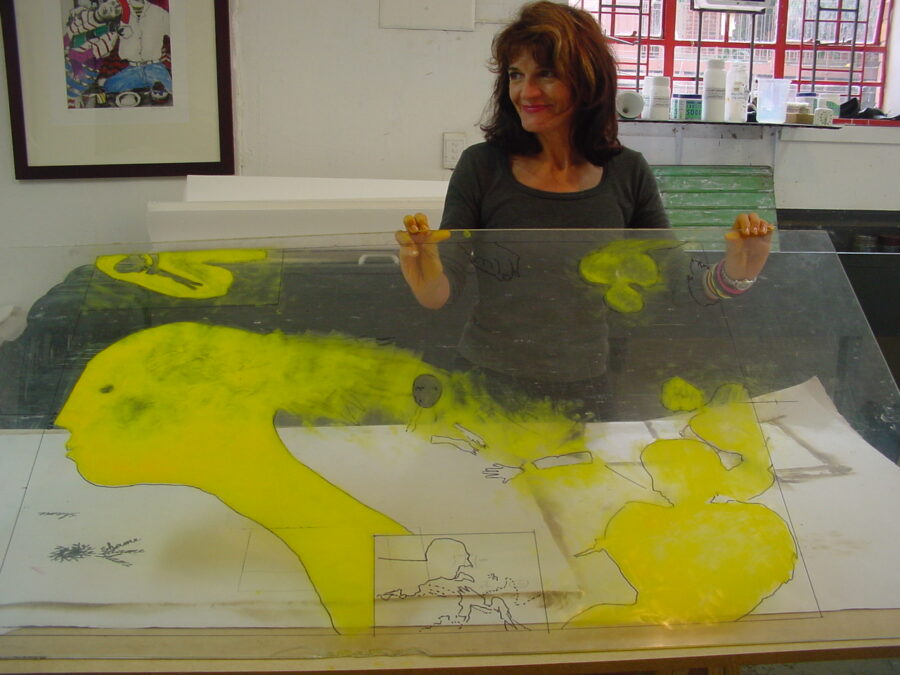
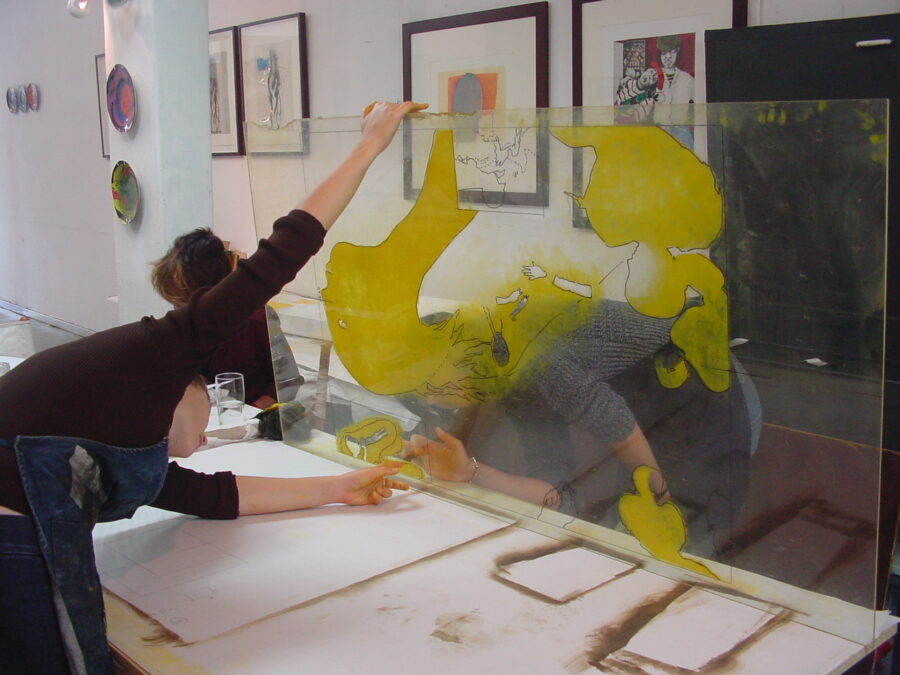
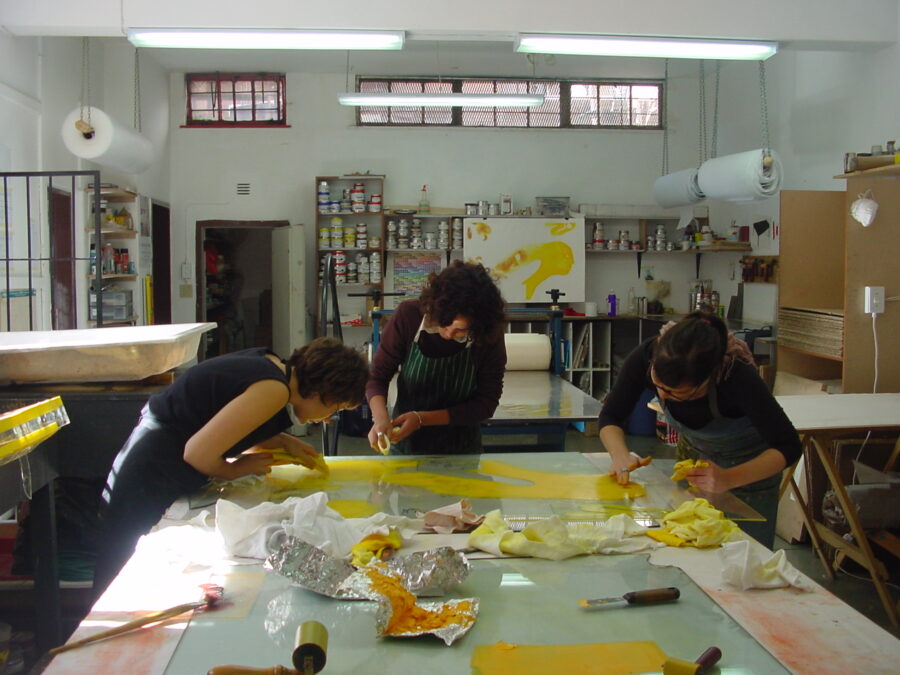
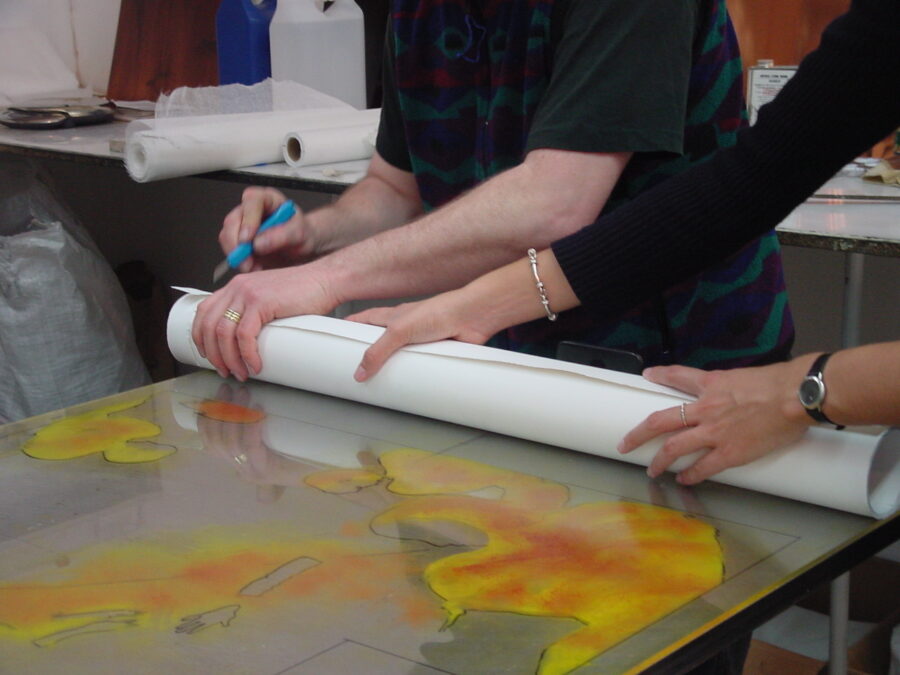
Above this layer sits four individual layers created from spitbite etching. Spitbite etching is like painting in application; one would paint the reactive acid directly on to the copper plate however, it can be far less predictable and the marks, although painterly, are far more aggressive.
There are two different spitbite plates that form the main compositional elements on each side of the work – one offering a brownish tone and the other more pink. This layering is how the grungy colouring of the figures has been achieved. Within the image, there are two smaller plates that have been printed in the lower central part of the image and the top left. These are also spitbite etchings – their individuality in form and content creates a topical separation, while visually providing a subtle detail of the embossed plate line.
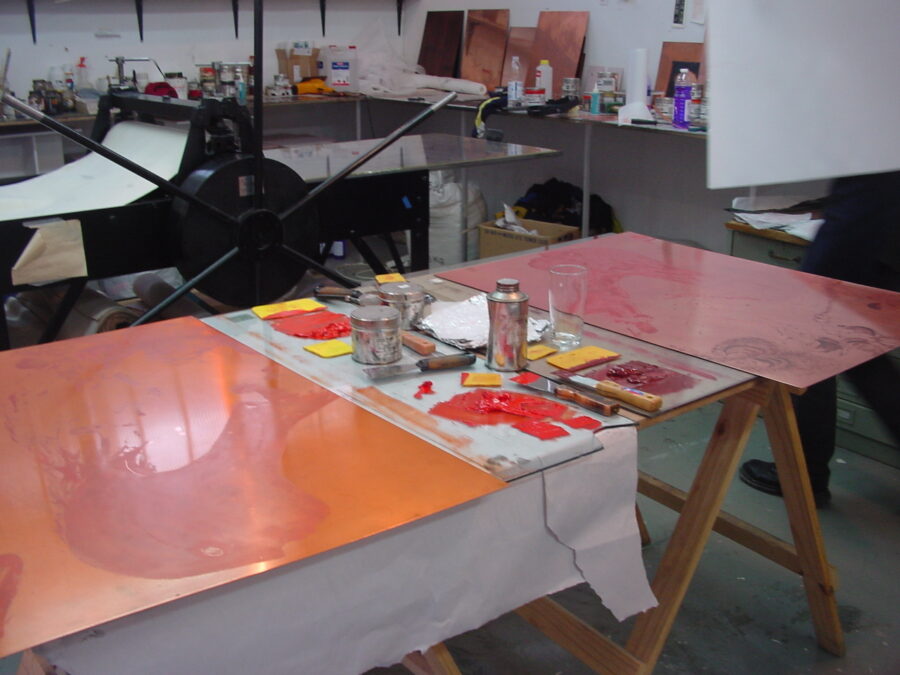
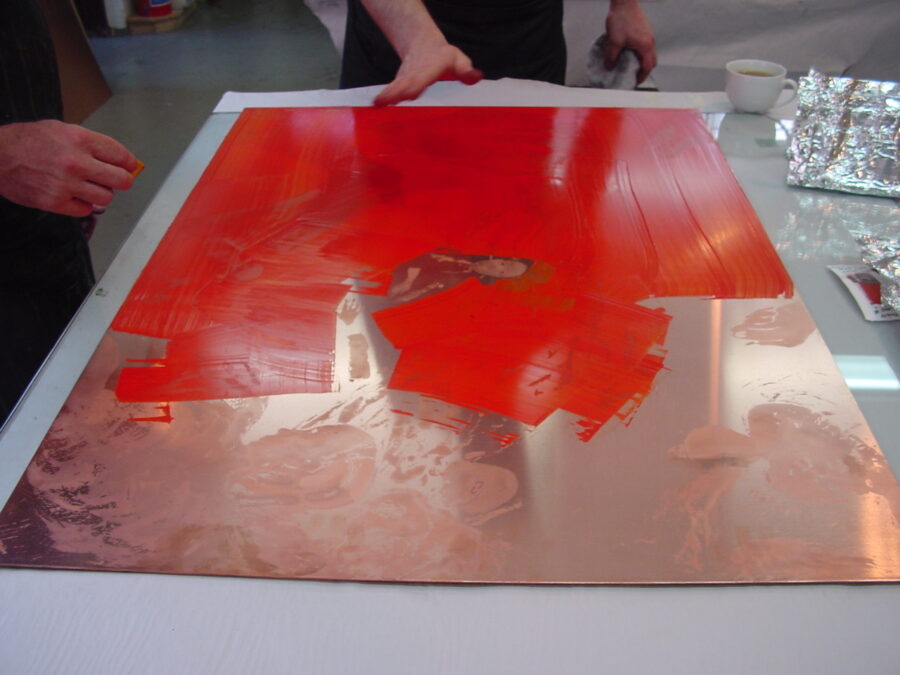
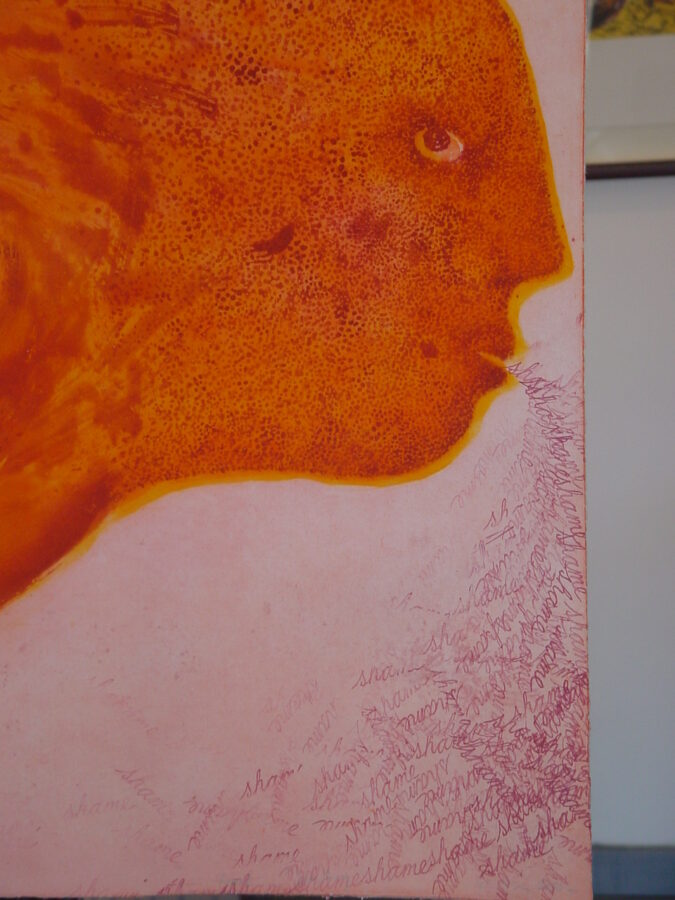
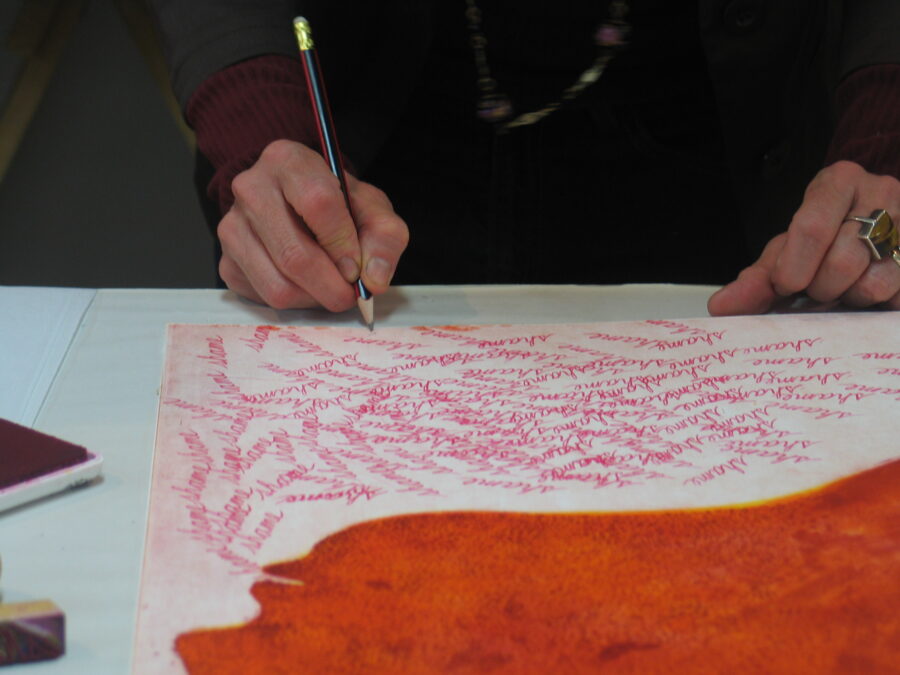
The final element was to have the artist repeatedly stamp the word ‘Shame” on the bottom left corner of the work – no easy task to undertake in an editioning process!
Head printer: Randy Hemminghaus
Editioning Printers: Tim Foulds and Robert Maledu
Additional Printers: Lauren Mulligan, Jillian Ross and Zhanè Warren.
‘Siestog’ makes part of the Women in the Workshop exhibition at the Blue House.
Women in the Workshop is an exhibition of fine art prints on paper – each of which were created in our workshop by the talented women artists that have collaborated with us over the years.
